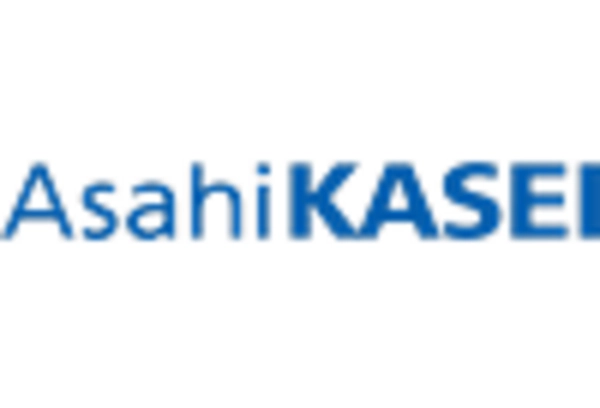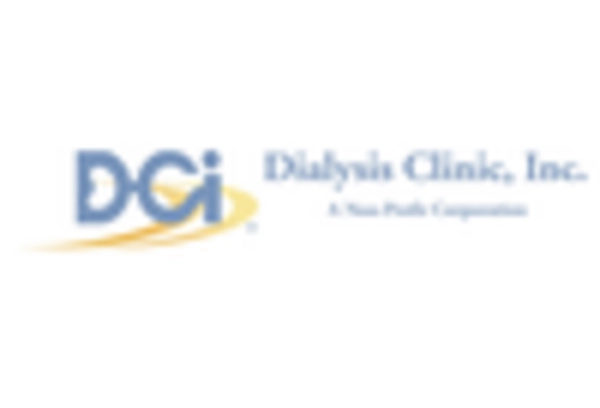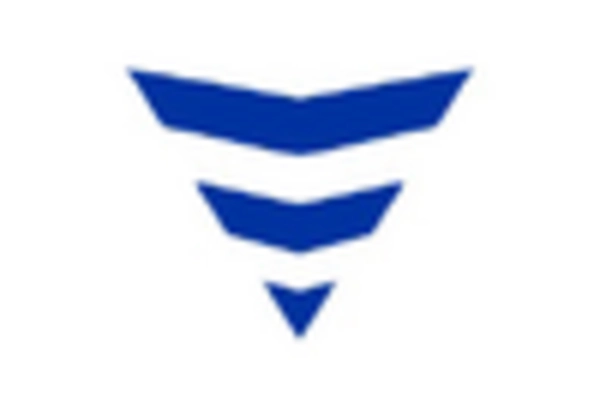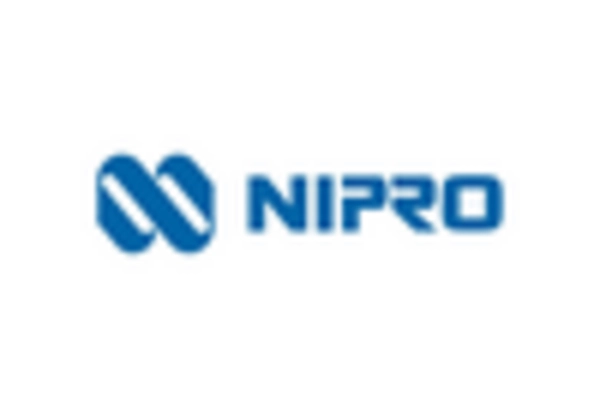Increased Healthcare Expenditure
The continuous renal-replacement-therapy market is benefiting from the rising healthcare expenditure in South Korea. Government and private sector investments in healthcare are on the rise, with spending projected to reach approximately 9% of GDP by 2025. This increase in funding allows for better access to advanced medical treatments, including continuous renal-replacement therapy. As healthcare facilities upgrade their infrastructure and technology, the demand for effective renal replacement therapies is likely to grow. Additionally, the focus on improving healthcare services and patient care quality is driving hospitals to adopt more comprehensive treatment options. Consequently, the continuous renal-replacement-therapy market is poised for growth as healthcare expenditure continues to rise.
Growing Awareness of Renal Health
There is a notable increase in public awareness regarding renal health in South Korea, which is positively impacting the continuous renal-replacement-therapy market. Educational campaigns and health initiatives are encouraging individuals to prioritize kidney health, leading to earlier diagnosis and treatment of kidney diseases. This heightened awareness is likely to result in a greater demand for renal replacement therapies, as patients seek effective management options. Furthermore, healthcare providers are responding to this trend by offering more comprehensive renal care services, including continuous renal-replacement therapy. As the population becomes more informed about the importance of kidney health, the market for continuous renal-replacement therapy is expected to expand, driven by the need for timely and effective interventions.
Rising Incidence of Kidney Diseases
The continuous renal-replacement-therapy market is experiencing growth due to the increasing prevalence of kidney diseases in South Korea. Chronic kidney disease (CKD) affects a significant portion of the population, with estimates suggesting that around 10% of adults are impacted. This rising incidence necessitates advanced treatment options, including continuous renal-replacement therapy, to manage patients effectively. The healthcare system is adapting to these needs, leading to an increased demand for renal replacement therapies. Furthermore, the economic burden associated with kidney diseases is substantial, prompting healthcare providers to invest in innovative solutions. As a result, the continuous renal-replacement-therapy market is likely to expand, driven by the urgent need for effective management of kidney-related ailments.
Technological Innovations in Medical Devices
Technological advancements in medical devices are significantly influencing the continuous renal-replacement-therapy market. Innovations such as portable dialysis machines and automated systems enhance the efficiency and effectiveness of renal replacement therapies. In South Korea, the integration of advanced technologies into healthcare practices is becoming more prevalent, with hospitals increasingly adopting state-of-the-art equipment. This trend is expected to improve patient outcomes and streamline treatment processes. The market for continuous renal-replacement therapy is projected to grow as healthcare facilities invest in these technologies, which not only improve the quality of care but also reduce operational costs. The potential for enhanced patient monitoring and data management further supports the expansion of this market.
Aging Population and Increased Demand for Care
The aging population in South Korea is a critical driver of the continuous renal-replacement-therapy market. As the demographic shifts towards an older population, the incidence of age-related kidney diseases is likely to rise. Older adults are more susceptible to chronic conditions, including kidney dysfunction, which necessitates advanced treatment options. The demand for continuous renal-replacement therapy is expected to increase as healthcare systems adapt to the needs of this demographic. Additionally, the growing number of elderly patients requiring renal care is prompting healthcare providers to enhance their services and invest in effective treatment modalities. This trend indicates a robust growth trajectory for the continuous renal-replacement-therapy market in the coming years.

















Leave a Comment